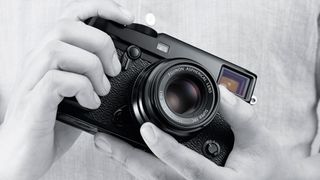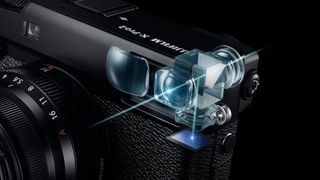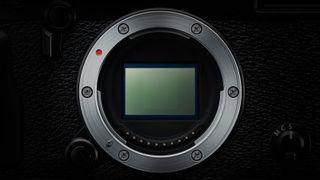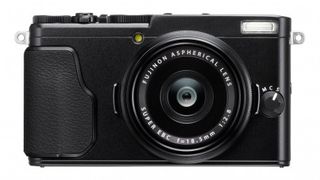X marks the spot with three new enthusiast Fuji cameras
The X-Pro2 confirms Fuji's commitment to its rangefinder format, while the X70 is a tasty new big-sensor compact

Fuji launched its first compact system camera, the X-Pro1, way back in 2012. Since then it's launched a raft of others, none of them adopting the X-Pro1's innovative hybrid optical/electronic viewfinder and opting instead for no viewfinder at all (the X-A1, X-A2, X-M1), a regular electronic viewfinder (X-E1, X-E2) or a DSLR design (X-T1, X-T10). That hybrid viewfinder did reappear in the X100 compact camera range, but not in the X-mount cameras, and you could be forgiven for thinking the X-Pro1 was an early format Fuji decided not to repeat.
Not so. All along, Fuji has insisted the X-Pro1 is its 'flagship' camera, even after the arrival of the powerful X-T1 – and the X-Pro2 has now arrived to prove it.
Confused? It turns out that Fuji sees the X-Pro1/2 design as being an alternative to the X-T1's DSLR-like layout. It's just as powerful, just as desirable, but different.


The X-Pro2's hybrid optical/electronic viewfinder is designed for those who like the brightness and clarity of a direct vision viewfinder with bright frames for different focal lengths – you can see what's going on around the frame, not just within it. This can help you time and plan fleeting images, so it's great for street photography, for example.
Or you can swap to the electronic viewfinder to preview white balance, exposure settings and image effects as you shoot, and even combine the two in Electronic Rangefinder mode, which superimposes the digital view on the optical image to provide additional shooting information.
Amongst other improvements, Fuji has increased the resolution of the electronic viewfinder to 2.36 million pixels, in line with the viewfinder in the X-T1.

The big story, though, is Fuji's new 24-megapixel APS-C X-Trans processor, which offers a 50% resolution increase over the 16-megapixel sensors used in Fuji's X-series mirrorless cameras so far. The fact Fuji has used it here shows how serious it is about the X-Pro2's rangefinder-style design, too.
Get daily insight, inspiration and deals in your inbox
Get the hottest deals available in your inbox plus news, reviews, opinion, analysis and more from the TechRadar team.
Other improvements include faster autofocus with more AF points, dual SD card slots, a 1/8000 sec maximum shutter speed and new 'ACROS' black and white film simulation mode and improved interface.
The X-Pro2 will cost £1,349 (AU$2,699, about US$1,940) and goes on sale in February 2016.
Fuji X70
The other big news from Fuji is the new X70 compact camera. The numbering suggests it lies somewhere between Fuji's small-sensor X30 compact camera and its high-end X100T. In fact, it's a lot closer to the X100T, using the same 16-megapixel APS-C X-Trans sensor but in a smaller body with no viewfinder (though an optional clip-on viewfinder is available) and a shorter focal length 28mm equivalent f/2.8 lens.


The X70 follows the same traditional design ethos as the X100T with a manual shutter speed dial on the top plate and a manual aperture ring around the lens. Each has an 'A' (Automatic) setting, so if you set the aperture ring to A the camera is in shutter-priority mode, if you set the shutter speed dial to A it's in aperture-priority mode, and if you set both to A it's fully manual.
The X70 is the first Fuji X-series camera to have a touch-screen display and this can be tilted upwards or downwards or rotated through a full 180 degrees for selfies.
The 28mm equivalent lens gives a wider angle of view than the 35mm equivalent lens on the X100T, and if that's still not wide enough you will be able to get a WCL-X70 to give a 21mm equivalent angle of view.
The lack of a viewfinder might put some users off, but the combination of a small body (no larger than the X30 and much smaller than the X100T), traditional controls, big sensor and wide lens could make the X70 the perfect travel/street photography camera for enthusiasts.
The X70 will cost £549 (AU$1,149, about US$790) from February 2016, and will be available in black and silver versions.
See also:
